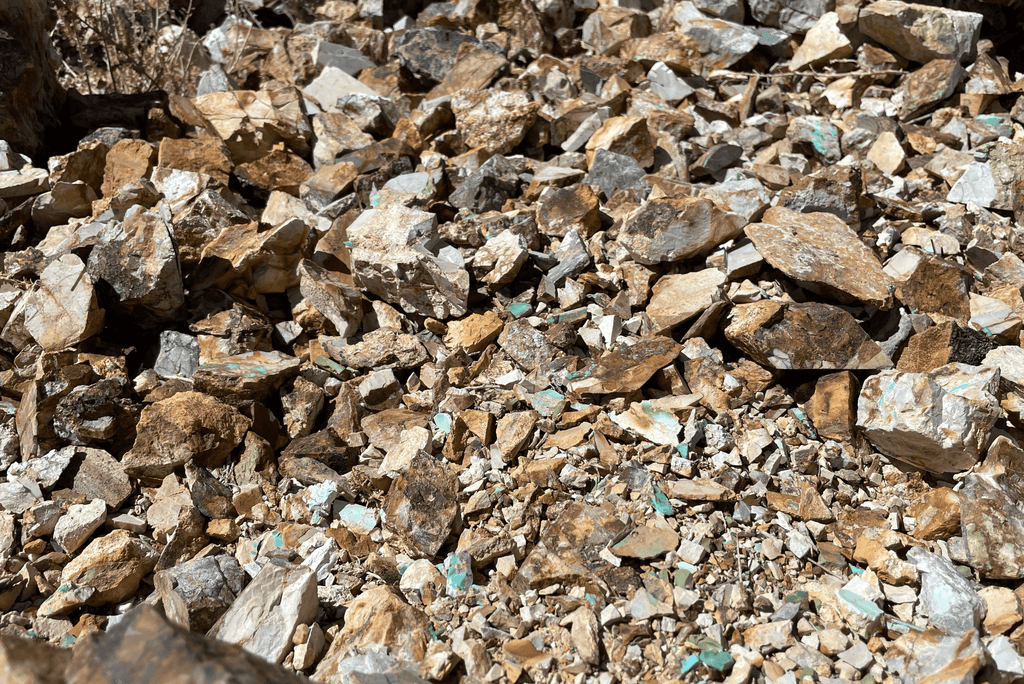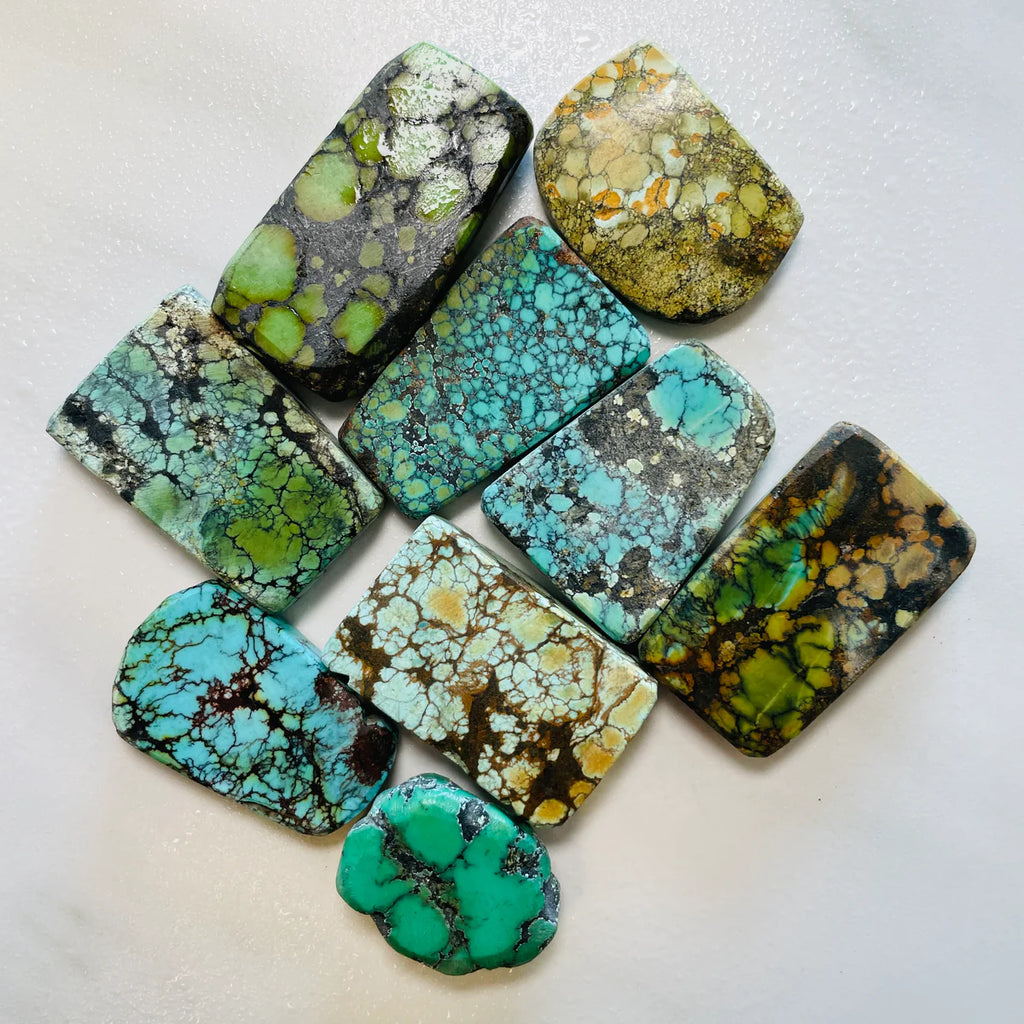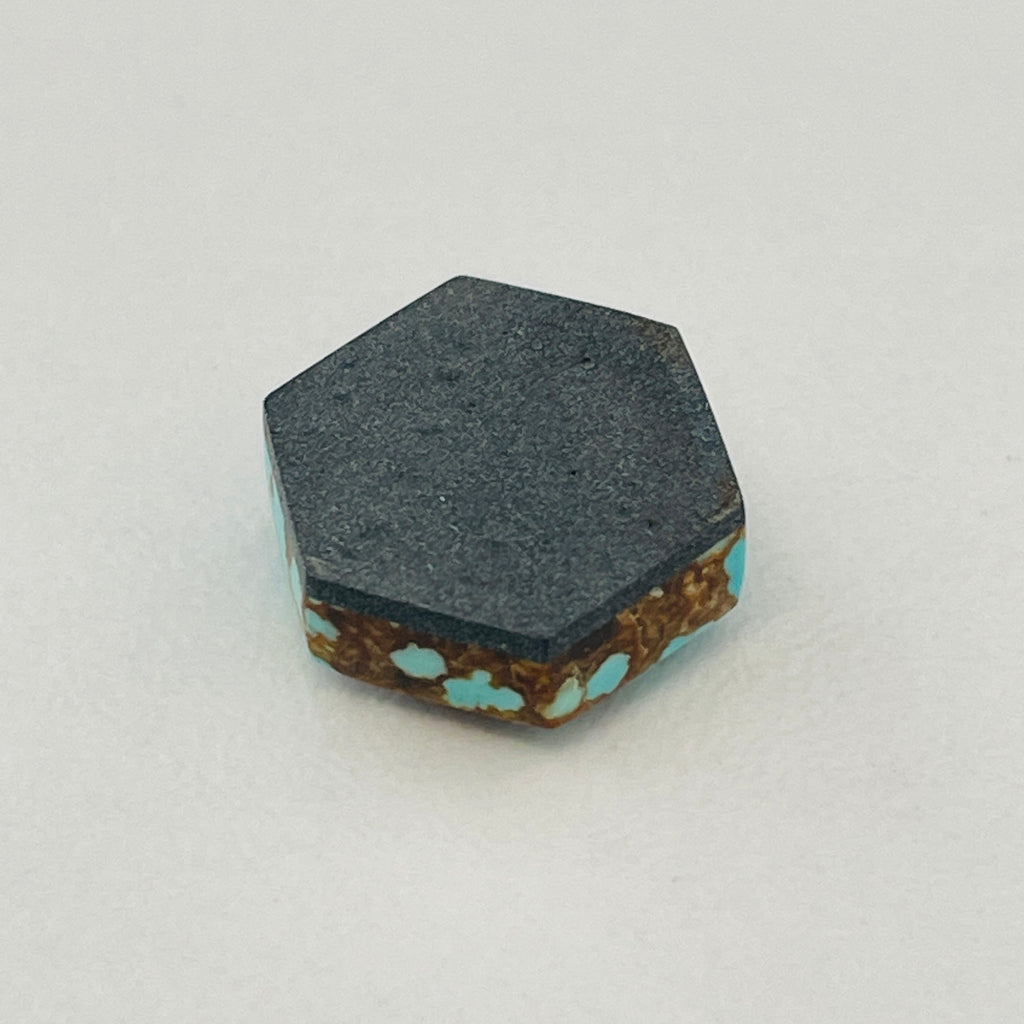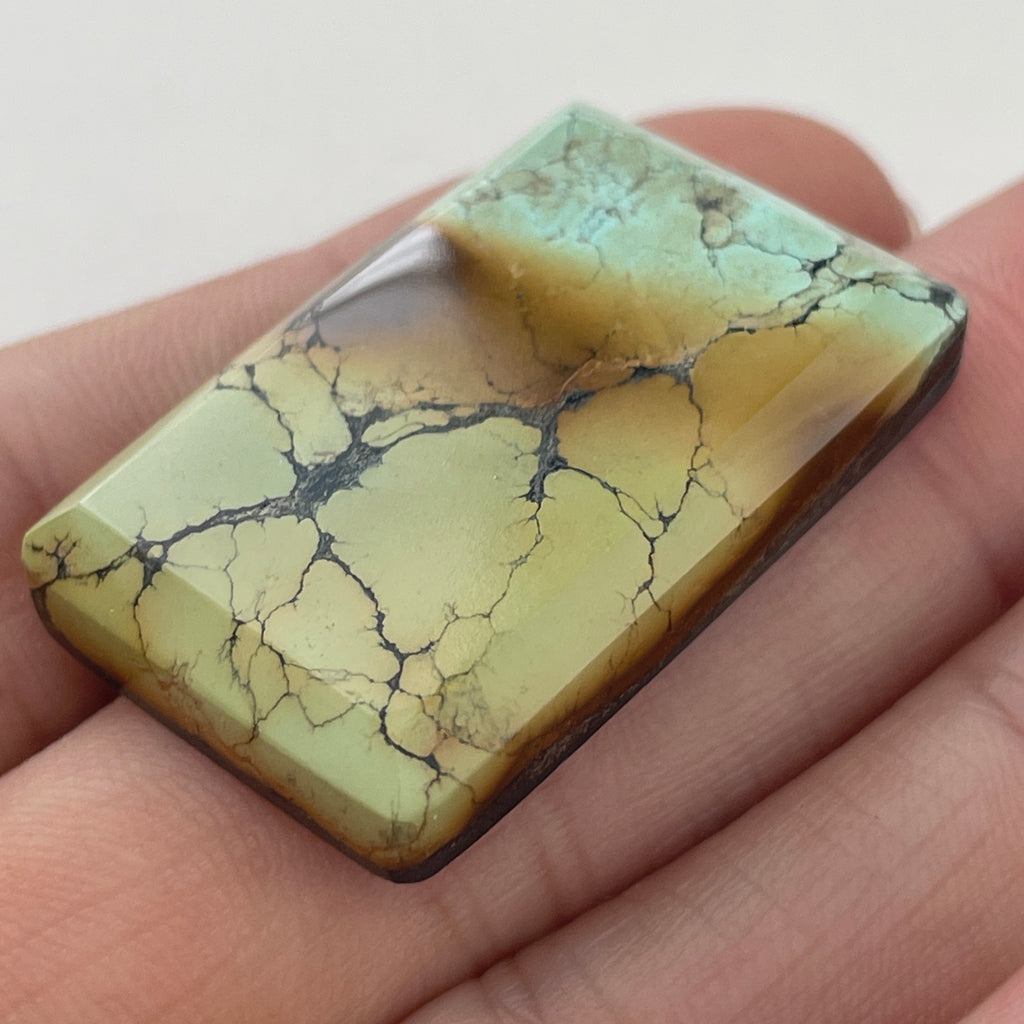The Journey of a Turquoise Stone: From Mining to Marvel and Beyond
The Journey of a Turquoise Stone: From Mining to Marvel and Beyond
Turquoise, a captivating gemstone known for its stunning blue-green hue, has a long and fascinating journey from the depths of the earth to becoming a cherished piece of jewelry or an artistic creation.

Photo by Turquoise Moose at the Royston Mine, Tonopah, NV, USA
In this blog, we will talk about the intricate process of mining, cutting, slabbing, and shaping turquoise. We will also explore its incorporation into various art forms, including jewelry, fashion accessories, home decor, and more. Join us on a journey that reveals the remarkable transformation of turquoise from rough stone to marvelous art. 💚
Mining Rough Turquoise
The journey of a turquoise stone begins deep within the earth's crust, where mineral-rich veins are formed over millions of years. These veins contain the precious turquoise in its raw and unrefined state. Turquoise deposits are found in various locations around the world, including the United States, Iran, China, and Mexico, among others.
Once a potential turquoise deposit is identified, mining operations commence. Depending on the location and size of the deposit, different mining techniques may be employed, ranging from traditional hand tools to mechanized equipment. The turquoise-bearing rocks are carefully extracted, ensuring minimal damage to the stones.

Photo by Turquoise Moose at the Royston Mine, Tonopah, NV, USA
After extraction, the turquoise undergoes sorting and stabilization processes. This involves examining the color, clarity, and hardness of the turquoise to separate high-quality stones from lower-grade materials. In some cases, stabilization is performed to enhance the stone's durability and color, ensuring it can withstand the rigors of cutting and shaping.
Turquoise Sorting and Turquoise Stabilization:
After the turquoise is extracted, it undergoes a sorting process to separate high-quality stones from lower-grade materials. This involves examining the color, clarity, and hardness of the turquoise.
In some cases, turquoise may undergo stabilization to enhance its durability and color. This process involves impregnating the stone with a clear resin, which helps prevent it from fading or becoming brittle over time. Stabilization also enhances the stone's ability to accept a polish, making it easier to work with during the cutting and shaping stages.
Cutting and Slabbing:
Once the turquoise has been sorted and stabilized, it is ready for cutting and slabbing. Cutting is performed by skilled lapidaries who use specialized equipment such as diamond saws and grinding wheels to shape the rough turquoise into workable pieces.

During the cutting process, the lapidary carefully examines the stone to determine its optimal shape and size. Slabs, or flat pieces of turquoise, are often cut to maximize the stone's potential. These slabs can later be transformed into various jewelry components, such as cabochons and faceted stones.
Creating Cabochons:
Cabochons, which are smooth, dome-shaped gemstones with a flat bottom, are a popular choice for showcasing turquoise's unique color and patterns. To create a cabochon, the lapidary further shapes the slab of turquoise, grinding and polishing it into a smoothly rounded shape.
Skilled artisans pay attention to the stone's natural features, such as matrix (the host rock in which turquoise forms) and spiderweb patterns, ensuring they are highlighted in the final cabochon. The polished cabochons are then ready to be set in various jewelry settings, such as rings, pendants, and earrings.

A backing solution can be added to cabochons. It provides stability to the cabochon and enhances its appearance. The backing material is typically attached to the back of the cabochon using an adhesive. Common backing materials include materials like epoxy resin, metal foil, or other decorative materials that complement the turquoise. The backing can add depth and contrast to the cabochon, enhancing its overall visual appeal.
Faceting Turquoise:
While cabochons are the most common way to present turquoise, faceted turquoise stones offer a different aesthetic appeal. Faceting involves cutting precise geometric shapes, typically with numerous flat surfaces, known as facets. This style accentuates the stone's brilliance and sparkle, creating a captivating play of light.

Faceting turquoise requires the use of specialized equipment and expertise due to the stone's relative softness compared to other gemstones. Careful consideration is given to the stone's color and transparency to determine the most suitable faceting style. The faceted turquoise stones can then be incorporated into jewelry designs, adding a touch of elegance and uniqueness.
Turquoise in Jewelry
Turquoise has been loved for centuries and is a popular choice for jewelry due to its captivating color and unique patterns. It can be incorporated into various jewelry designs, adding a touch of elegance and vibrancy. Here are some common uses of turquoise in jewelry:
- Rings: Turquoise rings make a bold statement with their vibrant color. They can be set in various styles, from simple solitaires to intricate settings with accent stones.
- Necklaces and Pendants: Turquoise pendants are a classic choice, often paired with silver or gold settings. They can be showcased as a single focal point or combined with other gemstones for a colorful ensemble.
- Bracelets and Cuffs: Turquoise bracelets and cuffs adorn the wrist with their eye-catching beauty. They can be crafted in sleek and minimalist designs or feature elaborate silverwork.
- Earrings: Turquoise earrings come in a range of styles, from delicate studs to dangling chandeliers. They add a pop of color and a touch of bohemian charm to any ensemble.
Turquoise in Art and Crafts
Beyond jewelry, turquoise is also a beloved gemstone in various art forms and crafts. It can be incorporated into different creations, adding a touch of elegance and natural beauty. Here are some examples:
- Bags and Accessories: Turquoise accents can be found on handbags, clutches, wallets, and even belts. The gemstone adds a splash of color and a sense of luxury to these fashion accessories.
- Hats and Headpieces: Turquoise embellishments on hats and headpieces create a striking visual impact. Whether it's a Western-inspired cowboy hat or an intricately beaded headpiece, turquoise adds a touch of southwestern flair.
- Keychains and Trinkets: Turquoise keychains and trinkets are popular souvenirs and gifts. They come in various shapes and sizes, often combined with other elements like feathers or beads, serving as reminders of turquoise's beauty.
- Wall Art and Home Decor: Turquoise is frequently incorporated into wall art and home decor, bringing a sense of serenity and natural beauty to living spaces. Paintings, sculptures, and mosaic art featuring turquoise can transform a room into an oasis of calm.
- Turquoise in Furniture: Some furniture designers incorporate turquoise into their creations, either by using the gemstone as decorative inlays or by incorporating turquoise-colored elements into the design. These unique furniture pieces become statement pieces in any interior space.
The journey of a turquoise stone, from mining to becoming a polished gem, showcases the skill and artistry of lapidaries and jewelry artisans. Beyond jewelry, turquoise's vibrant color and natural beauty continue to inspire artists and artisans worldwide.
Its incorporation into various art forms, including fashion accessories, wall art, and furniture, brings elegance, vibrancy, and a touch of southwestern charm to our lives. From adorning our favorite jewelry pieces to embellishing our living spaces, turquoise remains an exquisite choice for those seeking to infuse their creations with its mesmerizing allure. 💚
Create your next handmade piece with turquoise.
Looking for a specific size or shape of turquoise? Check out our calibrated turquoise collection.
If you're feeling adventurous, start creating with turquoise beads and turquoise nuggets.
Subscribe to our Newsletter and get the latest updates about product launches, restocks, fun and exciting promos, features from your favorite jewelry artist, teachers, and more!






















































